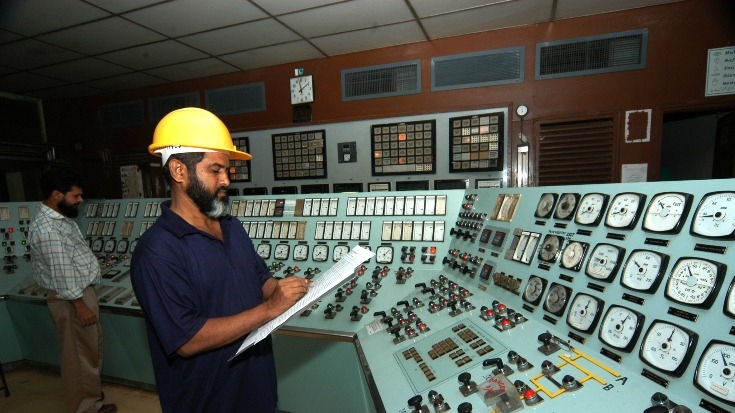For more on Pakistan’s economy and its prospects, join a live Facebook chat on Thursday April 10, 2014 with our Lead Country Economist Jose Calix, 10AM-10PM Pakistan time.
Pakistan’s economy is at a turning point, says the World Bank’s bi-annual Pakistan Development Update, launched today. Growth recovery is underway, with projected GDP growth approaching four percent, driven by dynamic manufacturing and service sectors, better energy availability, and early revival of investor confidence.
Inflation is steady at 7.9%. The fiscal deficit is contained at around six percent of GDP due to improved tax collection and restricted current and development expenditure. The current account deficit remains modest, at around one percent of GDP, supported by strong remittances and export dynamism, and the external position is slowly improving since monetary and exchange rate policies switched gear towards rebuilding reserves last November.
Economic activity is gradually improving says the report. Preliminary data for Fiscal Year 2014 (July 2013-June 2014) shows economic growth is picking up, driven mainly by services and manufacturing. Acceleration in growth of large-scale manufacturing came from strong performance of agro-based industries, iron and steel, construction, and external demand-driven cotton yarn- and fabrics-based textiles. Agriculture appears slightly below target owing to unfavorable weather conditions. On the demand side, growth continues to be driven by private consumption. However, private investment recovery is mild; and much of this is inherited from the crowding out of private-sector credit by government borrowing, which grew at close to nil in FY13.
Loose fiscal stance being corrected
A significant correction is taking place to ensure sustainability. Pakistan is on track to meet a fiscal deficit target of 5.8% of GDP in FY14. However revenue collection is slightly below target. On the expenditure side, energy-related subsidies have been reduced with tariff adjustments. However, while the government dealt with the stock of the circular debt, resulting in reduced load-shedding in the first months of the year, circular debt is re-emerging. Public investment –constrained by lack of fiscal space and any commitment to reduce the fiscal deficit –remains contained. Public debt remains above the 60% of GDP allowed by the Fiscal Responsibility Law, and justified by security reasons. As large fiscal deficits have been financed increasingly through domestic borrowing, rollover risk has increased. External financing available to the government is scarce, but expected to improve in the last two quarters.
The external position is fragile but strengthening. The current account deficit was small, at around 1 percent of GDP by end-FY13 and remains so. In contrast, net official foreign exchange reserves have risen to 1.1 month of imports, up from a low of 20 days at the end of November 2013. This is due in part to the fact that since the second quarter of FY14, the State Bank of Pakistan (SBP) increased its policy rate and has started to purchase dollars on the spot market, turning decisively toward rebuilding the external position.
Three sources of risk
Three sources of risk appear worrisome. Pakistan imports more than it exports, the latter being constrained by low productivity and competitiveness, limited access to reliable energy, and cumbersome business regulations. Political events keep FDI flows and private investment low, which also affects foreign reserves. An uncertain political environment undermines investor confidence and depresses economic activity. The troubled domestic energy sector continues to endure a long-due complex inheritance on its circular debt which, contrary to the government’s plans, might affect the magnitude of fiscal adjustment.
However, Pakistan’s Emerging Markets Bonds Index Plus (EMBI+) risk spread keeps declining from the high levels shown at the start of the new administration last year. Market confidence in the government’s program is bearing fruit, as the EMBI has almost halved from 1,011 basis points in March 2013 to around 468 basis points as of March 26, 2014. The government intends to benefit from it and return to the international markets with the placement of a $500 million-$1 billion Eurobond in the fourth quarter of the current fiscal year.

